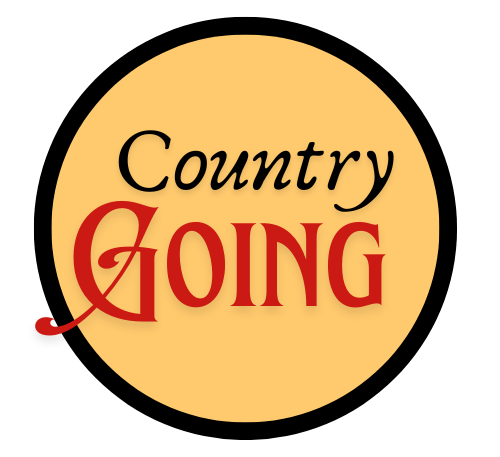Making the shift from city chic to country casual can seem like a daunting task, but it’s all about finding the right balance between style and practicality. Opt for versatile pieces that you can layer as this will ensure you stay comfortable, no matter what the weather throws your way. Think cozy knit sweaters, durable denim, and a reliable pair of boots that can handle both urban streets and rural paths.
Exploring the countryside often means adapting to a different lifestyle and activities. Swap out more formal attire for clothing that’s not only stylish but also functional. Effortless dresses that pair well with cardigans or utility jackets can be dressed up or down, making them perfect for weekend getaways.
When transitioning your wardrobe, focus on neutral tones and earthy hues that blend seamlessly with nature. Accessories like scarves and hats can add a touch of personality while keeping you warm. Practicality meets sophistication as you embrace garments that offer both comfort and a relaxed, yet polished, appearance.

Understanding the Rural Aesthetic
To truly embrace the rural aesthetic, it’s essential to grasp the foundational elements of country style, key components of rural fashion, and the distinctive materials and textures that characterize this look.
The Basics of Country Style
Country style blends rustic charm with functionality. It draws inspiration from the natural environment and traditional attire of rural areas. Typical pieces include denim jeans, flannel shirts, boots, and wide-brimmed hats.
Essentially, country attire reflects a connection to the land. Earthy tones like browns, greens, and blues are common. The emphasis is on comfort and durability, perfect for both leisurely activities and hard labor. Additionally, layers are crucial, accommodating the varying weather conditions experienced in the countryside.
Key Elements of Rural Fashion
Key elements in rural fashion revolve around practicality and timeless appeal. Accessories play a significant role, including leather belts, bandanas, and simple jewelry. Denim is a staple, whether in the form of jeans, jackets, or overalls.
Footwear is also distinctive. Sturdy boots, often made from leather, are not only stylish but also functional. Hats, especially cowboy or sun hats, add to the rural vibe and provide protection from the sun. Subtle patterns like plaid and checkered designs are frequently seen, offering a nod to traditional rural attire.
Materials and Textures
The materials and textures integral to rural fashion include denim, wool, cotton, and leather. These fabrics are chosen for their durability and comfort. Denim provides a rugged and sturdy feel, perfect for outdoor wear. Wool and cotton are warm and breathable, ideal for layering.
Leather is prevalent in accessories such as belts, boots, and jackets, offering both style and resilience. Textures are generally coarse and natural, reflecting the environment’s raw and organic quality. Embellishments like embroidery or simple stitching add a personal touch without compromising the intended simplicity.
Cultivating Your Country Wardrobe
Transitioning from a city wardrobe to a country wardrobe involves evaluating your current clothing, incorporating essential country pieces, adding appropriate accessories, and preparing for seasonal changes. This guide will help you feel comfortable and stylish in a country setting.
Assessing Your Current Wardrobe
Begin by looking at your existing clothing. Identify versatile items that can fit into a country lifestyle. Pieces like denim jeans, simple blouses, and classic knitwear often work well.
Separate these items from those that are clearly urban, such as high heels or business suits. This will help you see what gaps need to be filled.
Consider what specific activities you’ll be doing. For example, if you plan to take up gardening or hiking, you’ll need durable apparel.
Essential Pieces for a Country Lifestyle
Focus on acquiring some core country pieces. Tweed blazers and wax jackets are practical and stylish. Cable-knit sweaters offer warmth and a timeless look.
Look for sturdy trousers and jeans. Opt for materials like denim or heavy cotton.
Layering is key, so light jackets and cardigans are also useful. A classic button-down shirt can be dressed up or down to suit various occasions.
Accessories and Footwear
Accessories can make a big difference. Hats, such as wide-brimmed or flat caps, add character. Scarves and bandanas are not only stylish but also functional.
Footwear is crucial. Invest in a good pair of waterproof boots. They’re essential for muddy paths and wet conditions.
Comfortable walking shoes are also important. These will support you during long walks or outdoor chores. For a touch of style, consider brogues or loafers for casual outings.
Transitioning Through Seasons
Seasonal transitions require thoughtful planning. In winter, prioritize layering. Thermal undergarments, thick socks, and insulated coats are vital.
Spring and fall call for flexible options like lighter sweaters and waterproof jackets.
For summer, breathable fabrics are key. Choose linens and cottons to stay cool. Don’t forget sun protection accessories like wide-brimmed hats and sunglasses.
Having a few versatile pieces for each season will ensure you’re prepared year-round. Aim for items that can be layered and easily mixed and matched.
